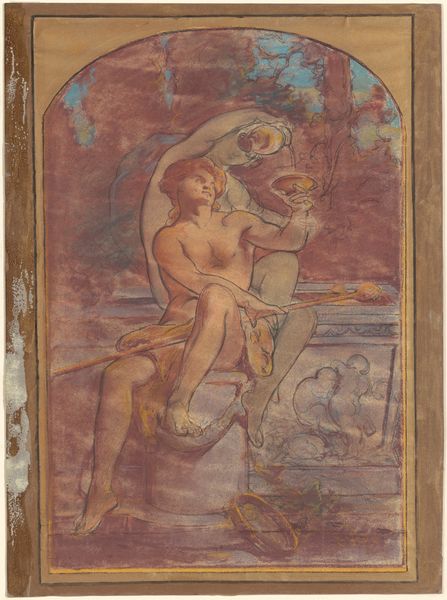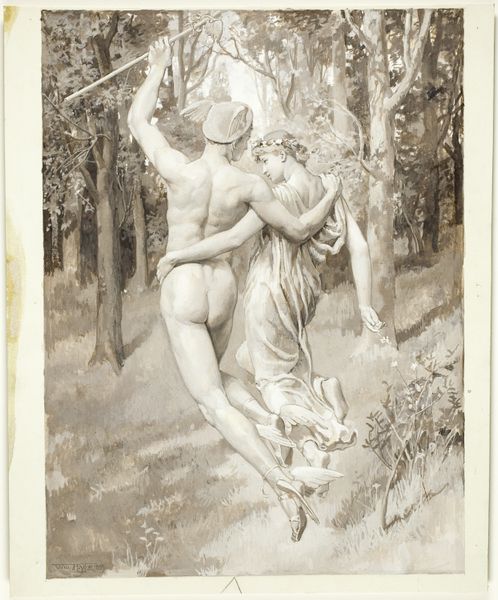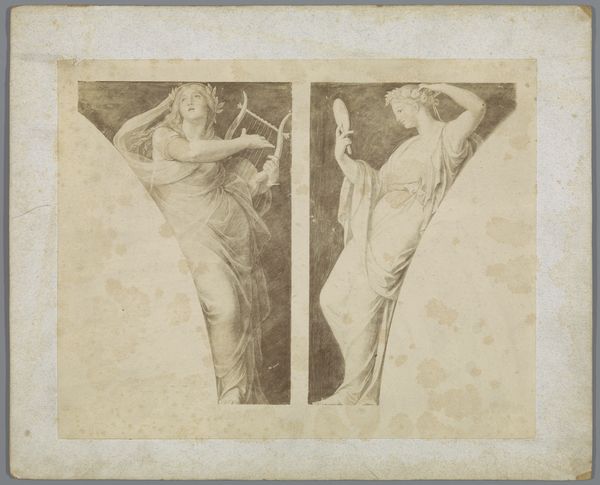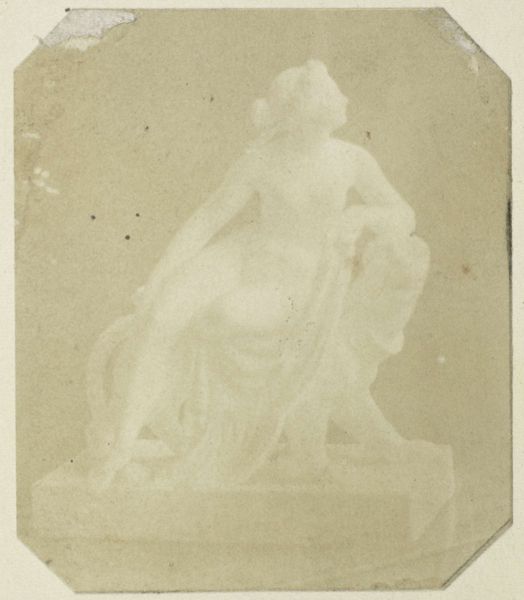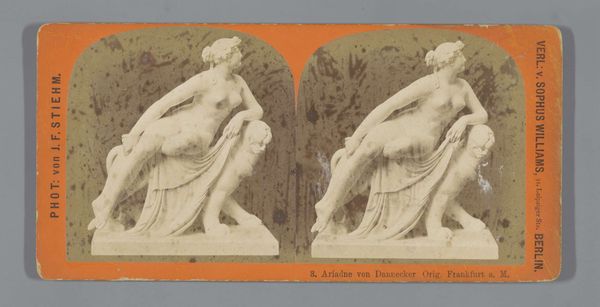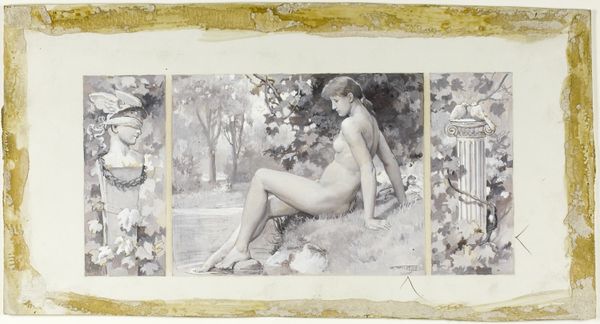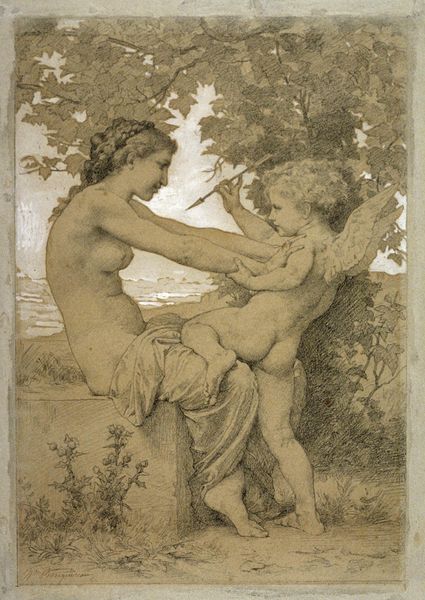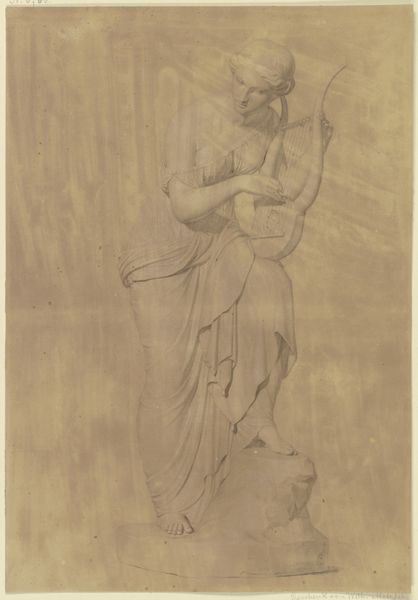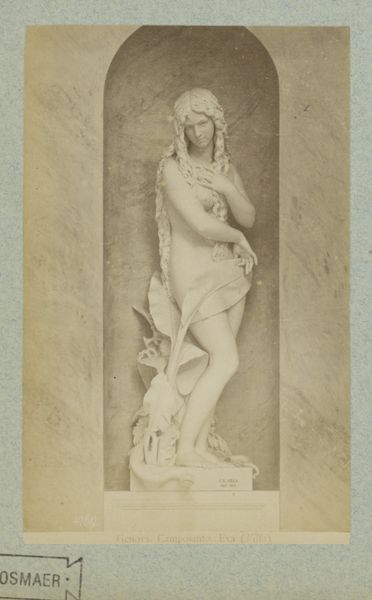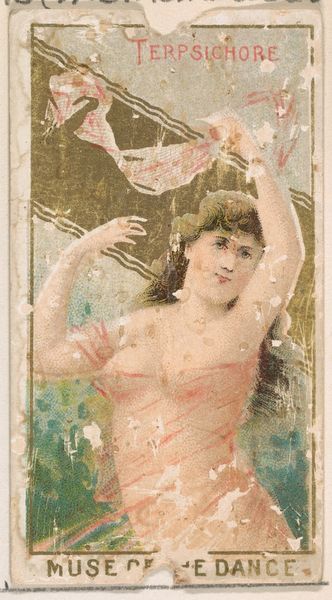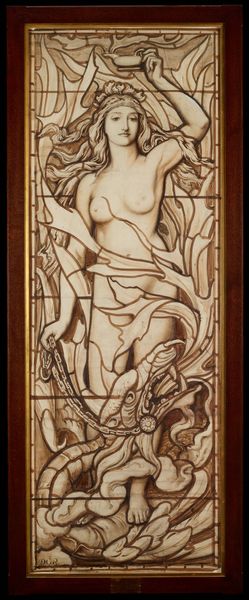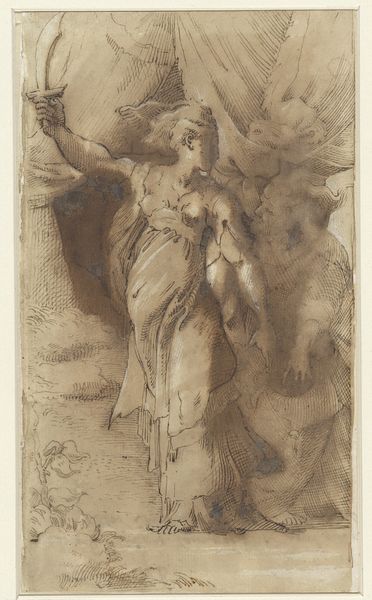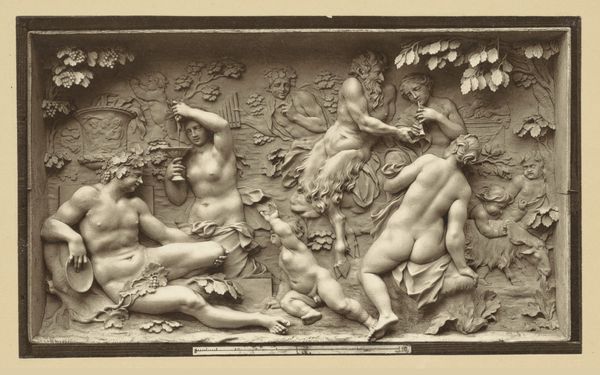
drawing, mixed-media, print, watercolor, graphite
#
portrait
#
drawing
#
mixed-media
#
water colours
# print
#
sculpture
#
landscape
#
oil painting
#
watercolor
#
graphite
#
academic-art
#
mixed media
#
watercolor
Dimensions: 220 × 404 mm
Copyright: Public Domain
Editor: This is Will Hicok Low’s "Odes and Sonnets Table of Contents," created around 1887 using mixed media. There's a classical feel, and a certain… ethereal quality to the figure. How would you interpret this work in terms of its broader cultural implications? Curator: Considering the historical context, the representation of the female nude during this period invites critical engagement with prevailing notions of beauty, femininity, and the male gaze. How might the seemingly innocuous subject of a "Table of Contents" become a site for negotiating power dynamics within artistic representation? Editor: I see what you mean. The woman is the literal 'table of contents'. Is she the object of our gaze and the text we read? Curator: Precisely. We can deconstruct the layers of meaning embedded within the imagery. How does the artist’s choice to depict her as a classical muse intersect with or challenge conventional societal expectations of women? Consider the artist's decision to include textual elements and to present the nude female form not as an individual but as a part of larger structural frame of the book's contents. Editor: The "Odes and Sonnets" on the banner almost seems secondary. The female form is what grabs attention. Is that a commentary in itself? Curator: Absolutely. By drawing from classical motifs while simultaneously positioning the female figure as the structural underpinning of the text, the artist generates a space for contemplating the construction of identity, and perhaps a quiet critique of how female figures have been used to carry forward the Western literary and art historical traditions. Editor: That definitely sheds new light on it. It's much more than just a pretty picture. Curator: Indeed. Engaging with art history necessitates considering the intersectional narratives it presents, uncovering the power dynamics that shape both artistic creation and its reception. It's in such tensions that artworks often become culturally meaningful. Editor: This was really thought provoking. I’ll never look at a ‘simple’ drawing the same way again!
Comments
No comments
Be the first to comment and join the conversation on the ultimate creative platform.
